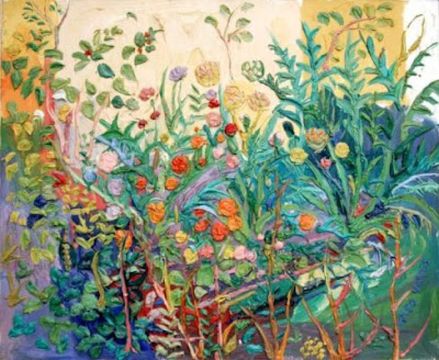Famous painters

- George Owen Wynne Apperley – Artworks and Biography of the British Painter
George Clare – Artworks and Biography of the British Painter
Fred Yates – Artworks and Biography of the British Painter
George Owen Wynne Apperley is a British painter born on June 17, 1884 in Ventnor, on the Isle of Wight. George spent his childhood in Hampshire but moved to Torquay with his mother after his father died in an accident. Wynne's artistic ambition was never supported by his family, who wanted him to join the army.
Apperley's interest in art continued and he enrolled at Herkomer Academy, Bushey, in 1903, after short stays at Eagle House and Uppingham School. Wynne was expelled the following year due to his rebellious nature and continued to be home-schooled with a private tutor. Returning from a trip to Italy with his tutor in 1904, Wynne began painting seriously and held his first exhibition at the Royal Academy in London the following year.
George has exhibited extensively and received several awards and recognitions during his artistic career. In 1945 he was awarded the Order of Alfonso X the Wise by the Spanish government, becoming the only British painter to do so during his lifetime. Wynne's works can be found in prestigious museums and galleries around the world. He died in Tangier in 1960.
What was George Owen Wynne known for?
George Owen Wynne Apperley is known for painting landscapes, portraits, figures and mythological scenes. Wynne's early work focused primarily on mythological subjects, which he later abandoned to paint local landscapes. George is renowned for his figurative paintings of women in various environments.
Who was George Owen Wynne influenced by?
George Owen Wynne Apperley was influenced by Paolo Veronese, Tiziano Vecelli and Rembrandt van Rijn. Wynne's early works show the direct influence of these artists, who also painted historical scenes and mythological subjects.
What art movement was George Owen Wynne associated with?
George Owen Wynne Apperley was associated with the Symbolism art movement.
George Clare was a British painter who is best known for showing the beauty of nature in exquisite detail. It is not clear where Clare's artistic skills were developed, but he was greatly influenced by William Hunt, particularly the delicate dotting technique he used to bring nature to life in his paintings. Clare had two artist sons, Oliver and Vincent, who also created still lifes. George Clare's works were exhibited from 1864 to 1874. He died in 1899.
What does George Clare paint?
George Clare paints flowers, fruits and the bounty of nature in explicit detail that feels like you can almost touch them right on the canvas. Although Clare's peers focused on landscape painting, he preferred to set his sights on hedges.
Who was George Clare influenced by?
George Clare was influenced by William Hunt, a 19th-century English watercolorist, famous for his naturalistic paintings depicting still lifes of flowers, fruit and birds' nests. Hunt's sense of color was considered as true as that of any artist in England; he was considered the best still life painter according to the English writer John Ruskin.
Fred Yates was a reclusive painter, known for his plein air paintings of French and English landscapes. Fred was born in Urmston, Lancashire on July 25, 1922. He served in the Second World War alongside his twin brother, who was later declared missing in action. After losing his twin brother in World War II, Fred left his job as an insurance clerk and decided to become an artist.
Yates received his first formal education in drawing, painting and printmaking at Bournemouth Teacher Training College. Yates taught for 20 years after graduating, but he never enjoyed the profession due to his shy nature. Instead, he learned to paint to distract himself from his reality. In 1968, Yates left teaching and moved to Cornwall to become a full-time painter, where he painted his first works of rocky beaches and village scenes using household paints.
He had his first exhibition in London with Thompson's Gallery in 1992. Yates then moved to France and continued to paint. Towards the end of his life, Fred Yates returned to England, where he died of a heart attack at University College Hospital in 2008.
What is Fred Yates known for?
Yates once said that he "felt closer to the man in the street and sought to please him with his works." This is reflected in his paintings, as Yates is known for his colorful landscapes and figures created from free brushstrokes and childlike abstractions.
Fred Yates is also known and recognized for his paintings of village landscapes in France and England, producing beautiful works of art with simplicity and in a childlike spirit, a principle deeply rooted in him.
Who was Fred Yates influenced by?
Fred Yates was influenced by LS Lowry, the Manchester painter who inspired him to paint the lives of ordinary people. Additionally, Yates once pitted himself against LS Lowry in the Brighton and Hove Albion Football Club paint and came second.
What art movement is Fred Yates associated with?
Fred Yates is associated with the naive art movement, also known as primitivism when embraced by a skilled artist like Yates.